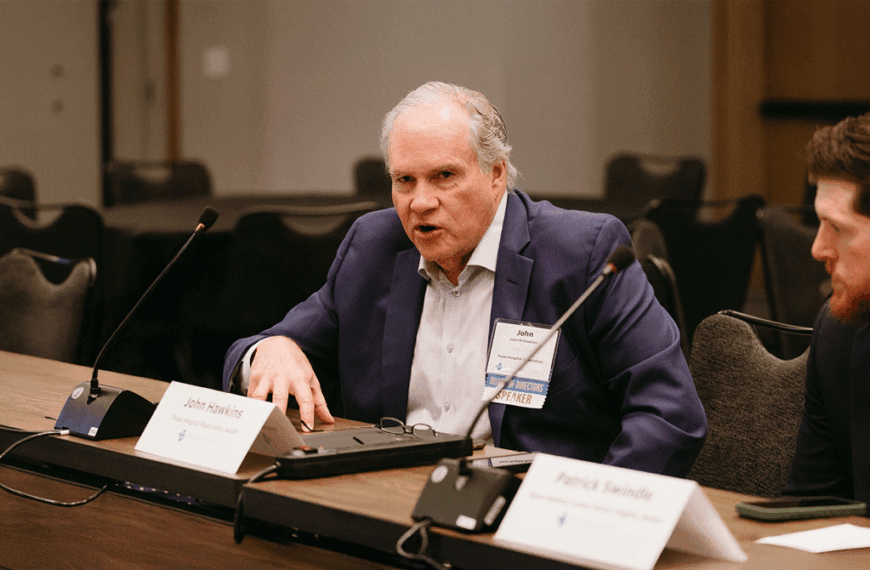“Access to care” is a broad term heard a lot in our industry. Providing and improving it is always the aim, but there are many pieces to that puzzle – untold numbers of angular pieces involving patient, insurer and workforce factors. At the heart of that effort is bringing highly skilled medical professionals together with the patients who need their care.

To many hospitals, H-1B worker visas represent an important piece of that sprawling puzzle. These visas grant temporary U.S. employment status to nonimmigrant qualified professionals in many “specialty occupations” – including physicians and other health care workers – who don’t otherwise have authorization to work in the U.S. Simply put, the H-1B program helps health care facilities fill vital roles that they can’t currently fill through the U.S. workforce alone.
That’s why the recent move by the Trump administration to impose a $100,000 fee for each new H-1B visa application has been met with deep concern across the health care sphere and many other industries. The American Hospital Association has urged the government to exempt health care personnel from this new application fee. At least two legal challenges have been filed, including one by the U.S. Chamber of Commerce noting that prior to the proclamation implementing the $100,000 fee, “most H-1B petitions cost less than $3,600.”
That dramatic difference in the cost just to petition for a new H-1B worker is as good a starting point as any for demonstrating why the Texas Hospital Association is aligned squarely with AHA on the need to exempt applications for health care work.
“Given the staffing and financial challenges our hospitals are already facing, the increased petition fees would likely prevent many of them from continuing to recruit essential health care staff and could force a reduction in the services they are able to provide,” wrote AHA President/CEO Rick Pollack. “While the U.S. must do more to invest in training the next generation of health care workers, we believe that recruiting qualified foreign-trained medical professionals is an effective short-term approach that is vital to ensuring access to care in communities across the country.”
The state of our workforce suggests this is a particularly bad time to add impediments to filling health care personnel shortages. As Pollack noted, the U.S. Health Resources and Services Administration’s 2024 State of the U.S. Health Care Workforce report projects a shortage of more than 187,000 full-time equivalent physicians by 2037, with “nonmetro areas” experiencing greater shortages than their urban counterparts.
Those projected shortages would likely be worse without the H-1B program. According to an H-1B annual report for fiscal year 2024, released by the Department of Homeland Security this past April, nearly 17,000 approved H-1B beneficiaries work in the “Medicine and Health” sector. A little over half of that total – more than 8,500 – were physicians and surgeons.
In our state, the H-1B program gets a good amount of use. The federal government’s H-1B Employer Data Hub shows employers with a Texas mailing address collectively had 786 approved beneficiaries in the Health Care and Social Assistance category during fiscal year (FY) 2025. In FY 2024, Texas had 844 approved H-1B beneficiaries in that category.
It’s unfortunate that the U.S. health care workforce is unable to fill the roles that the H-1B program helps to address. Just as AHA has been working on this issue at a national level, THA has doggedly guided policymakers toward workforce solutions here in Texas. For example, we’ve stressed the importance of funding for key programs like the state’s Mental Health Professionals Loan Repayment Assistance Program, which offers loan repayment help for qualified professionals practicing in a mental health professional shortage area. And we’ve backed graduate medical education funding that keeps enough residency slots open for Texas medical school graduates to continue their studies in Texas – a proven indicator that they’ll stay to practice here once they’re full-fledged physicians.
Those are needed long-term solutions, and we’ll continue supporting them to create a Texas health care workforce that can better sustain its own needs. However, when there aren’t enough local clinicians available, the urgent and critical nature of health care makes it an industry where short-term, bridge-type solutions are essential. We agree with AHA’s position that “recruiting qualified foreign-trained medical professionals is an effective short-term approach that is vital to ensuring access to care in communities across the country.”
H-1B visas should continue to be accessible to health care facilities all over our nation and our state. Health care applications should be exempted from this one-size-fits-all application fee to ensure that we have every tool at our disposal to improve access to care in the here and now.
Related articles from CEO Messages
Let the Shutdown Be a Reminder: Hospitals Need Long-Term Certainty From Congress
At the start of this month, the federal government shut…
In This Special Session, We Stressed Why Hospitals Themselves Are Special
During the special session of the Texas Legislature that just…
Texas Needs Congress to Renew Soon-to-Expire Premium Credits
A fair number of times in this column’s history, you’ve…
After the Federal Mega-Bill, Our Lone Star Safety Net Remains Intact
It occupied our time and our minds as much as…
In a Unique Session, THA Survives and Thrives
There’s never been a legislative session quite like this one.…
Congress Should Be Careful With Medicaid. Lives Are at Stake.
Since talk of a major congressional budget package began several…







